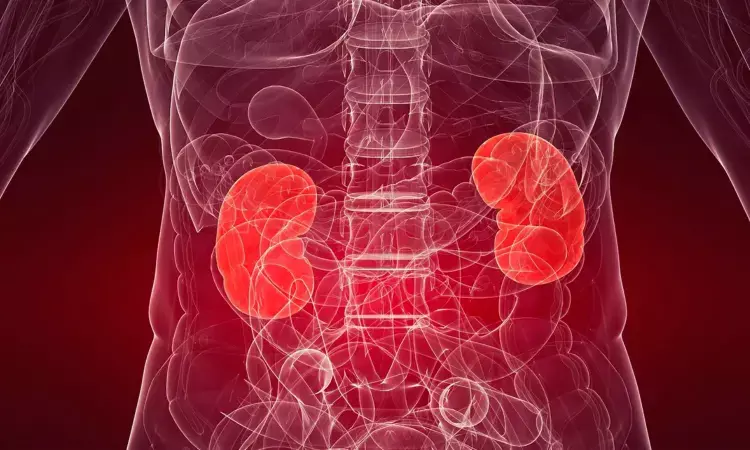- Home
- Medical news & Guidelines
- Anesthesiology
- Cardiology and CTVS
- Critical Care
- Dentistry
- Dermatology
- Diabetes and Endocrinology
- ENT
- Gastroenterology
- Medicine
- Nephrology
- Neurology
- Obstretics-Gynaecology
- Oncology
- Ophthalmology
- Orthopaedics
- Pediatrics-Neonatology
- Psychiatry
- Pulmonology
- Radiology
- Surgery
- Urology
- Laboratory Medicine
- Diet
- Nursing
- Paramedical
- Physiotherapy
- Health news
- Fact Check
- Bone Health Fact Check
- Brain Health Fact Check
- Cancer Related Fact Check
- Child Care Fact Check
- Dental and oral health fact check
- Diabetes and metabolic health fact check
- Diet and Nutrition Fact Check
- Eye and ENT Care Fact Check
- Fitness fact check
- Gut health fact check
- Heart health fact check
- Kidney health fact check
- Medical education fact check
- Men's health fact check
- Respiratory fact check
- Skin and hair care fact check
- Vaccine and Immunization fact check
- Women's health fact check
- AYUSH
- State News
- Andaman and Nicobar Islands
- Andhra Pradesh
- Arunachal Pradesh
- Assam
- Bihar
- Chandigarh
- Chattisgarh
- Dadra and Nagar Haveli
- Daman and Diu
- Delhi
- Goa
- Gujarat
- Haryana
- Himachal Pradesh
- Jammu & Kashmir
- Jharkhand
- Karnataka
- Kerala
- Ladakh
- Lakshadweep
- Madhya Pradesh
- Maharashtra
- Manipur
- Meghalaya
- Mizoram
- Nagaland
- Odisha
- Puducherry
- Punjab
- Rajasthan
- Sikkim
- Tamil Nadu
- Telangana
- Tripura
- Uttar Pradesh
- Uttrakhand
- West Bengal
- Medical Education
- Industry
Low Fluid Removal Rate in AKI Patients Linked to Higher Mortality: Study

Researchers have discovered that a low rate of fluid removal in patients with severe acute kidney injury (AKI) receiving continuous dialysis is related to a highly increased risk of dying within 90 days. In one of the largest retrospective studies at the University of Chicago, patients with less aggressive removal of fluids in the initial three days of continuous veno-venous hemodialysis (CVVHD) were found to have the highest mortality. This is in comparison to those with high or moderate fluid removal. These results stress the need for the maximization of fluid removal rates in order to enhance survival in critically ill patients with AKI. The study was published in the Journal of Critical Care by Samantha G. and colleagues.
Fluid overload is prevalent in patients with severe AKI and has been for a long time linked with adverse outcomes, such as longer-term dialysis dependence and death. However, little is known regarding how much fluid to remove, and how rapidly, to maximize outcomes during continuous dialysis. The study sought to investigate whether the rate of fluid removal via CVVHD contributed to mortality among ICU patients with AKI.
From April 1, 2016, to March 31, 2020, 1,242 adult ICU patients receiving CVVHD for AKI were included in this single-center retrospective cohort study. Scientists gathered data on daily fluid balance, pre-existing health status, and outcomes in patients to explore the relationship between fluid removal rate and survival.
The patients were stratified according to fluid removal rate in the first three days of CVVHD based on body-weight calculation. Low fluid removal rate was ≤1.01 mL/kg/h, and high fluid removal rate was >1.75 mL/kg/h. Variables at baseline like weight, pre-existing heart failure, and initial fluid overload were examined to ascertain their impact on patient outcomes. A multivariable adjusted hazard model was employed to determine the relationship between fluid removal rate and 90-day mortality.
Results
In the 1,242 patients analyzed:
• Highest (74%) 90-day mortality occurred among patients who had a low fluid removal rate.
• Low fluid removal, in an adjusted analysis for confounders, was independently related to increased 90-day mortality with an adjusted hazard ratio (AHR) of 2.74 (95% CI: 1.58–4.76).
• Conversely, high fluid removal was unrelated to elevated mortality, and potentially provides a survival advantage (AHR: 0.50; 95% CI: 0.30–1.03), although without statistical significance.
• Baseline group differences were for increased rates of congestive heart failure and variability in pre-CVVHD cumulative fluid balance and body weight.
This research concludes that low fluid removal rate during continuous dialysis in AKI patients is a significant and independent predictor of 90-day mortality. Although increased fluid removal rates were not adverse, they may be of benefit and need to be investigated further in clinical trials. These findings highlight the importance of close monitoring of fluid management strategies in the ICU environment, particularly in critically ill AKI patients on CVVHD.
Reference:
Gunning, S., Mire, M., Gulotta, G., & Koyner, J. (2025). Impact of fluid removal rate on patients receiving continuous renal replacement therapy for acute kidney injury. Journal of Critical Care, 89, 155161. https://doi.org/10.1016/j.jcrc.2025.155161
Dr Riya Dave has completed dentistry from Gujarat University in 2022. She is a dentist and accomplished medical and scientific writer known for her commitment to bridging the gap between clinical expertise and accessible healthcare information. She has been actively involved in writing blogs related to health and wellness.
Dr Kamal Kant Kohli-MBBS, DTCD- a chest specialist with more than 30 years of practice and a flair for writing clinical articles, Dr Kamal Kant Kohli joined Medical Dialogues as a Chief Editor of Medical News. Besides writing articles, as an editor, he proofreads and verifies all the medical content published on Medical Dialogues including those coming from journals, studies,medical conferences,guidelines etc. Email: drkohli@medicaldialogues.in. Contact no. 011-43720751


